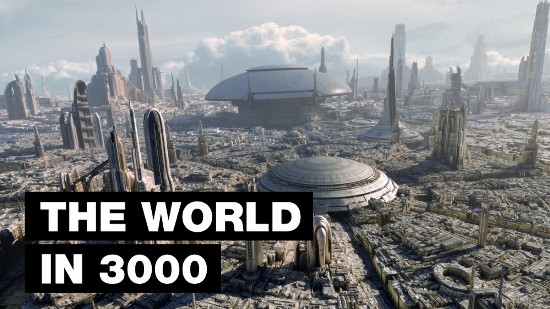A few weeks ago I wrote about the mental exercise I go through as I swim 80 lengths every other morning here in our apartment pool. The 80 amount to approximately a mile and to keep me going I think of each lap as equivalent to a century.
In my posting about what our world and humanity will experience in the year 2100, I speculated on how advances in science and technology will impact our species and the planet. Futurology is an interdisciplinary field that looks at environmental, social, scientific and technological trends to develop future scenarios. As a self-described futurist, I have wondered if one can take a course on the subject. To my surprise, I found a 2017 web listing with 48 institutions and organizations offering foresight and future studies that even offer Master’s and Ph.D. degrees in futurology (although not necessarily given that name). These are programs that include philosophical and ethical methodology studies, trend scanning, scenario and strategy building, systems complexity theory, strategic planning, imagination and creative thinking. If I were to go back to school, I would happily have enrolled in these types of programs.
Michio Kaku, the theoretical physicist who wrote “The Future of Humanity,” describes our current civilization as mid-level Type 0. What does that mean?
A Russian astrophysicist, Nikolai Kardashev, in 1964 described civilization types giving them designations going from 1 to 5. He didn’t describe a Type 0. That was added by Carl Sagan, another noted astrophysicist, who measured our current state within a Type 0 parameter. Sagan described human existence now from the tribal societies in the Amazon to our energy-guzzling present cities and countries as somewhere between Type 0.5 and 0.6. At 0.5 we mastered flight. At 0.6 we reached the Moon. Today, we are at 0.7 as we prepare to build a permanent presence on our nearest celestial neighbour. Once we master fusion energy and have quantum computing go mainstream we will move to 0.8 which should happen before 2100.
Kardashev’s scale aligned with the amount of energy civilizations consume. Today, we are at 17.5 Terrawatt-hours, still far away from Kardashev’s starting point of Type 1 which will redouble and redouble the energy we use until it is 100,000 times greater than what we use in the present.
Kaku believes that milestone will be met and surpassed in the next 100 to 200 years. It means we will harvest all of the energy reaching Earth from the Sun, an estimated 100 Quadrillion Watt-hours. Our Type 1 civilization will have the means to manipulate the weather and even control earthquakes and volcanoes.
Could we do this in 100 or 200 years? I’m not convinced. But certainly, by 2500 CE, it sounds possible. So what else can we do between that year and the subsequent 500 that follows? Can we aspire to each Kardashev’s Type 2 and harness all of the energy of the Sun, not just the sunlight falling on our planet? Can our Type 2 technologies make us capable of moving Earth and the other planets of the Solar System? If we reach Type 2, can the extinction-level event associated with the demise of the dinosaurs, no longer be seen as a threat to human civilization?
All of this happening by 3000 CE seems impossible. When you consider how far we have come from 2500 BCE, the time when the Great Pyramids were built, to where we are today, however, then leaps of futuristic insight like this seem possible. Put in the context of our progress in the past. Back in 2500 BCE, we harnessed energy from fire, water and wind to support our pre-industrial civilizations. In the present, we have added electricity and the energy of the atom.
Before 0 CE, human knowledge doubled every 1,500 years. By 1900 CE it doubled every century. By 1945 every 25 years. Today it happens every twelve months and soon it will happen every twelve hours. Nine hundred and seventy-seven years from now, in the year 3000 CE, our civilization and Earth will almost be unrecognizable to us in the present. We will be re-engineered as well as our planet.
From there we will master the Solar System and beyond making the leaps to Type 3, 4, 5 and beyond. Try to imagine how our human civilization will appear then, as we progress through each of these stages.
What will constrain us? Einstein posed a Universe speeding limit based on how fast light travels. In Star Trek, starships travel faster than the speed of light using warp drive technology. Today, some NASA scientists are trying to make that happen. If we master quantum entanglement can we invent the transporter featured in Star Trek, and teleport ourselves across the galaxy? And then the hypothetical wormholes that appear in science fiction in movies like Contact, could be the equivalent of urban subways to help us traverse from one star system to another encountering other species going through the stages of civilization like ourselves.
When I finish my morning swims and reach the 80th lap, in equivalent years I have transported myself to 8080 CE. I have yet to imagine the state of civilization and humanity by then. I am, at some point, going to try. There appears lots of time for my mind to wander and wonder as swim and speculate on what might be. That’s the fun of being a futurist.
















